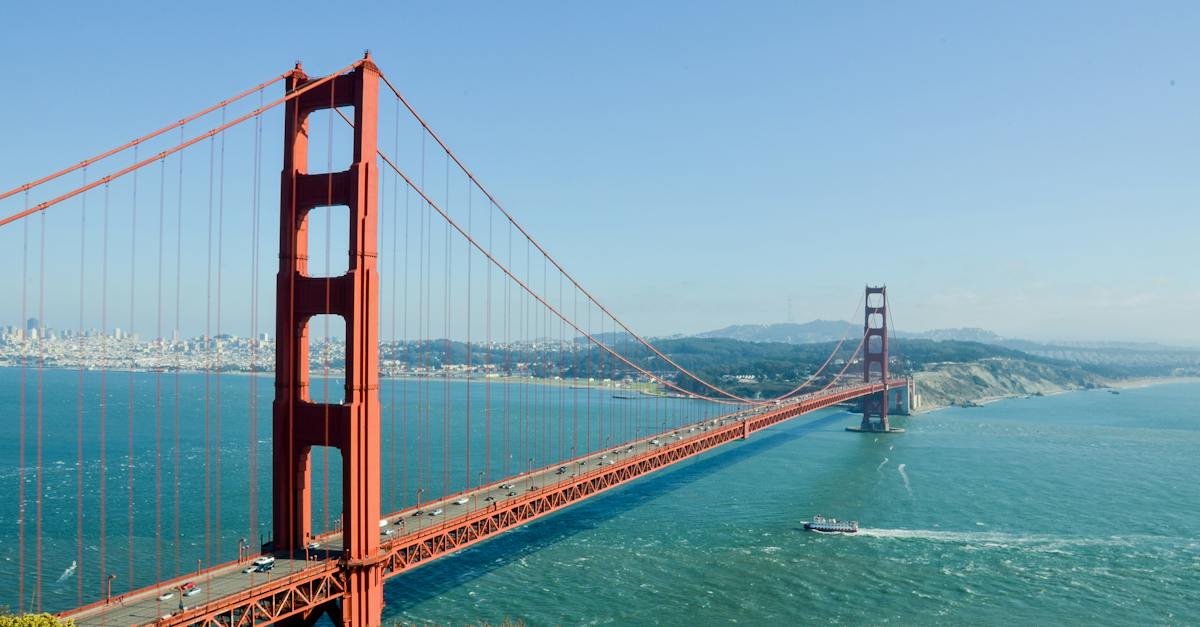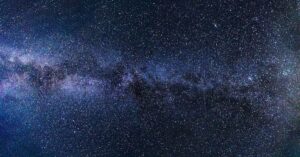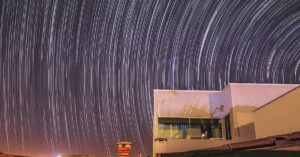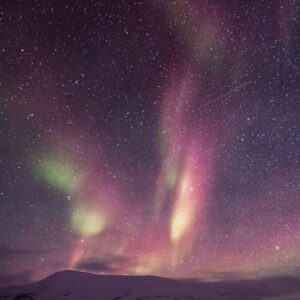This site contains affiliate links to products. I may receive a commission for purchases made through these links.
If you’re like me, there’s nothing quite like gazing up at a star-filled sky. It’s a humbling, awe-inspiring experience that can make you feel connected to the universe. And let me tell you, California is one of the best places to do it.
From its vast deserts to its towering mountains, California offers some of the most stunning stargazing spots in the country. Whether you’re a seasoned astronomer or just a casual stargazer, you’ll find a spot that’ll take your breath away.
So, get ready to pack your telescope and join me on this journey through the best stargazing locations in the Golden State. Trust me, you won’t want to miss out on these cosmic views.
Joshua Tree National Park
Continuing our celestial journey, we’ll drift into Joshua Tree National Park. Nestled between the Mojave and Colorado Deserts, this national park’s stark, vast landscape serves as a magnificent backdrop for stargazing. With virtually no light pollution and clear desert air, it’s almost like having an all-access pass to the cosmos.
Bring your telescope or binoculars if you have them, but don’t worry if you don’t. The park’s high elevation combined with its notoriously clear atmosphere creates an opportunity for an unmediated gaze into the universe. Regardless of whether you’re watching with your naked eye or through a lens, the experience is heart-stopping.
Frequent visitors have reported spotting a large number of celestial objects, including various galaxies, nebulae, and a plethora of stars. There’s something almost magical about standing still in the desert, looking up at the multitude of stars overhead. For the lucky ones, the crackle of falling stars streaking across the desert sky provides an unforgettable tableau.
The best times for stargazing in Joshua Tree are during the new moon periods when the moon’s light doesn’t overshadow the stars. To make the most of your trip, try timing it with meteor showers. The park is a prime viewing spot for these natural spectacles.
Yearly Meteor Showers and Optimal Viewing Dates at Joshua Tree National Park:
| Meteor Shower | Optimal Viewing Date |
|---|---|
| Quadrantids | January 3-4 |
| Lyrids | April 21-22 |
| Perseids | August 11-13 |
| Geminids | December 13-14 |
Should your heart yearn for more cosmic wonders after visiting Joshua Tree National Park, don’t fret. Many more awe-inspiring stargazing locales await us further down the California terrain. Set your sights high and prepare for our continuing journey under the California stars.
Yosemite National Park
Moving on from the mesmerizing galaxies of Joshua Tree National Park, let’s venture into another magnificent location for stargazing in California: Yosemite National Park. With less light pollution than most urban environments, this park offers an unobstructed, breathtaking view of the starry skies.
During my ventures to Yosemite, I’ve had the chance to witness splendid celestial wonders. Its high-altitude locations, like Glacier Point and Taft Point, provide panoramic views of the cosmos you’d find hard to match.
Stargazing in Yosemite is at its best during new moon phases when the sky is its darkest. That’s when I’ve spotted constellations like Draco, Ursa Major, and Lyra. Occasionally, I’ve even caught sight of a stray meteor or two streaking across the sky.
The park offers robust programs to enhance visitors’ starry-eyed experiences. These include ‘Star Parties’ hosted by the park’s rangers and astrologers. As an experienced stargazer, I can attest to their enriching, educational value.
Don’t forget to check weather conditions before venturing out — the last thing you want is a cloudy night spoiling your stargazing plans. I’ve found the crisp, clear nights during the summer and fall months to be prime time for stargazing.
When it comes to accommodation in Yosemite for stargazers, camping is an excellent option. Near the park, you’ll find a wide range of campgrounds. I’ve spent many nights at Upper Pines and the North Pines campgrounds. These places are ideal if you wish to gaze at the wonders of the cosmos till you drift off to sleep.
To sum up, Yosemite National Park offers celestial scenery and superb locations to view it from. So grab your telescope, pack your overnight bag, and get ready to gaze into the stunning California sky. But wait, there’s still more to explore in this state known for its starry skies.
Death Valley National Park
Despite its somewhat ominous name, Death Valley National Park is truly a haven for those who are passionate about stargazing. It’s characterized by its wide open spaces and the absence of artificial light, giving the term “dark sky” a whole new meaning.
One notable attribute that sets Death Valley National Park apart from other areas is its official designation as an International Dark Sky Park. Indeed, stargazers need to be watchful as Death Valley boasts some of the darkest nights in the United States, which make it an exemplary site for this pastime.
If you’re wondering when the best time to visit is, the chillier months between November and April are the most fitting. During these months, you’ll have a better chance of clear skies and the desert temperatures are considerably more comfortable for nighttime exploration. Meanwhile, in the summer, temperatures soar and can remain near 100°F even after sunset, making stargazing somewhat challenging.
For those looking for prime stargazing spots within the park, try Harmony Borax Works and Mesquite Flat Sand Dunes. These locations provide fantastic skyline views, unmarred by tall trees or buildings.
Of course, safety should always be a priority when visiting the park. Make sure to pack plenty of water, arrange for suitable transportation and above all, respect the park’s rules and regulations.
If camping is on your agenda, Death Valley offers several campgrounds that also provide phenomenal stargazing opportunities. Among them, Furnace Creek, Stovepipe Wells, and Panamint Springs are camper favorites. However, be aware that some campgrounds close during the extreme summer months.
At Death Valley National Park, every night is an invitation to discover a new constellation, a distant planet, or even a meteor shower. So, consider making it one of your go-to destinations for spectacular stargazing in California. Surely, the splendors of the night sky here won’t disappoint.
Mount Shasta
After shedding some light on the allure of Death Valley National Park, it’s time to redirect our gaze northwards to another popular stargazing destination in California – the majestic Mount Shasta. Mount Shasta premieres as one of the best spots, not just in California, but in the whole of the U.S., for an unequaled stargazing experience.
Making statements like those aren’t out of the blue! Let me share some factual insights that led me to vouch for this spectacular site. Known to be the second highest peak in the Cascades, Mount Shasta stands tall at a whopping 14,179 feet. Its high altitude coupled with its remote location allows for minimal light pollution. This blend of height and darkness serves up an exquisite dark canvas that’s bursting with an extraordinary display of celestial bodies.
You might be thinking, “Isn’t it going to be freezing atop a mountain for a stargazing mission?” Well, the answer depends on when you decide to visit. While it’s generally cooler on the peak, the most favorable time for stargazing at Mount Shasta is during the summer months. Clear skies coupled with a moderate climate can lead to a stunningly brilliant stargazing night.
Where exactly should you set up your telescope or spread your blanket for a relaxing gaze into the cosmic realm? A foolproof place within the vicinity of Mount Shasta that’s known for offering brilliant celestial observation opportunities would be the Lake Siskiyou Camp Resort. The low amount of light pollution, a nearby water body that further magnifies the astral beauty, and the availability of camping options make it a hit among novice and pro stargazers alike.
But remember, like any other outdoor adventure, it’s crucial to be mindful of safety concerns. You should check the local weather forecast before making the ascent to avoid getting caught in unexpected storms or intense cold. As always, proper gear, warm clothing, and a solid plan will ensure that your stargazing experience at Mount Shasta is as stellar as the sky above.
Let me leave you with the image of yourself nestled comfortably under a pitch-black sky, awestruck by the mesmerizing display on nature’s widescreen. Such is the magic of Mount Shasta. A must-visit for every stargazing enthusiast!
Big Sur
Off we venture to another stargazing hotspot, Big Sur. This Central Californian gem’s rugged coastline offers unobstructed, breathtaking views of both the Pacific Ocean and the night sky. Miles away from densely populated cities, Big Sur’s remote setting significantly diminishes any semblance of light pollution. That’s quite a treat for astronomy lovers out there.
To experience Big Sur at its best, I’d suggest setting up a makeshift observatory at the Pfeiffer Big Sur State Park. The park’s sprawling expanse of wilderness, coupled with its minimal artificial light, provides an incredible environment to observe the cosmic wonders above.
Don’t be surprised, however, if your eyes are not only drawn upwards. Big Sur’s night adds an uncanny beauty to the horizon where the dark ocean water merges with the equally dark sky. You might even witness nature’s own light show as bioluminescent plankton light up the waves!
You’ll find it important to plan ahead when scheduling your stargazing trip to Big Sur. The region features a Mediterranean climate, with warmer months offering clear skies. Therefore, the best time for stargazing in Big Sur typically falls between July and September. Remember, though, to stay updated with the weather forecasts for a stellar viewing experience.
In line with preserving Big Sur’s natural lightscape, I always urge that visitors use only red flashlights during their stargazing sessions. It’s essential to be mindful of nature, ensuring we’re doing our part to keep this stargazer’s paradise as is.
Don’t forget that the starlit journey through California doesn’t end here. There’s plenty more to discover along the Golden State’s ethereal nightscapes. Set your sights next on another stargazing marvel, The Anza-Borrego Desert State Park.
Conclusion
So there you have it. California’s an absolute dream for stargazers, with gems like Big Sur’s Pfeiffer State Park offering a stellar show. Remember, timing’s crucial – clear skies during warmer months make for the best viewing. And don’t forget your red flashlight to keep the lightscape pristine. But Big Sur’s just the start. There’s a whole universe waiting to be discovered in California, with places like the Anza-Borrego Desert State Park. So grab your telescope, pack your bags, and get ready for an unforgettable journey through the cosmos, right here in the Golden State. Happy stargazing, folks!
Frequently Asked Questions
Why is Big Sur recommended for stargazing?
Big Sur is recommended for stargazing due to its remote location and minimal light pollution, making it an optimal environment for viewing the night sky. Pfeiffer Big Sur State Park is listed as a superb spot for setting up an observatory.
What unique spectacle might be observed in Big Sur?
Aside from stars, one could possibly witness bioluminescent plankton lighting up the waves along Big Sur’s stunning coastline.
When is the best time to visit Big Sur for stargazing?
The warmer months are recommended for stargazing in Big Sur as these times offer clear skies. It’s good to plan ahead to make the most of your trip.
Why should red flashlights be used in Big Sur?
Using red flashlights assists in preserving the natural lightscape. It helps stargazers maintain night vision and minimizes light pollution.
Are there other notable stargazing locations in California?
Yes, there are other wonderful stargazing destinations in California. The Anza-Borrego Desert State Park is mentioned as another place to experience the beauty of a star-filled sky.




